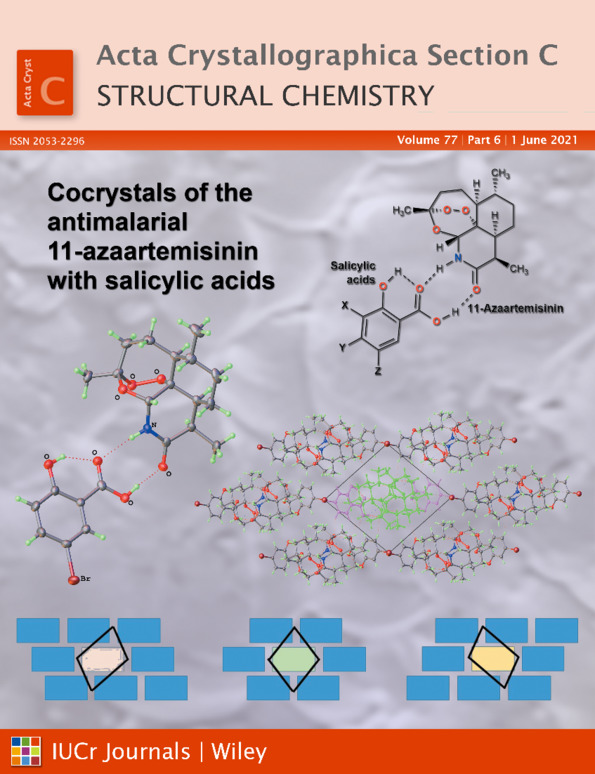Unique octahedral rotation pattern in the oxygen-deficient Ruddlesden–Popper compound Gd3Ba2Fe4O12
Abstract
A novel Ruddlesden–Popper-related compound, Gd3Ba2Fe4O12, was discovered and its crystal structure was determined via single-crystal X-ray diffraction. The structure has an ordered structure of octahedra and pyramids along the c axis. Gd3Ba2Fe4O12 belongs to the tetragonal system P42/ncm, with a = 5.59040 (10) Å and c = 35.1899 (10) Å. The A-site ions in the Ruddlesden–Popper structure, i.e. Gd3+ and Ba2+, exhibit an ordering along the c axis. The perfect oxygen deficiency is accommodated at the GdO layers in the proper Ruddlesden–Popper structure. Using the bond-valence-sum method, the Fe ions in the FeO6 octahedra and FeO5 pyramids represent valence states of +3 and +2.5, respectively, demonstrating a two-dimensional charge disproportionation. The corner-sharing FeO6 octahedra and FeO5 pyramids are tilted in opposite directions, with the neighbours around one axis of the simple perovskite configuration, which, using Glazer's notation, can be represented as a−b0c0/b0a−c0. In the perovskite blocks, the facing FeO5 pyramids across the Gd layer rotate in the same sense, which is a unique rotation feature related to oxygen deficiency.




